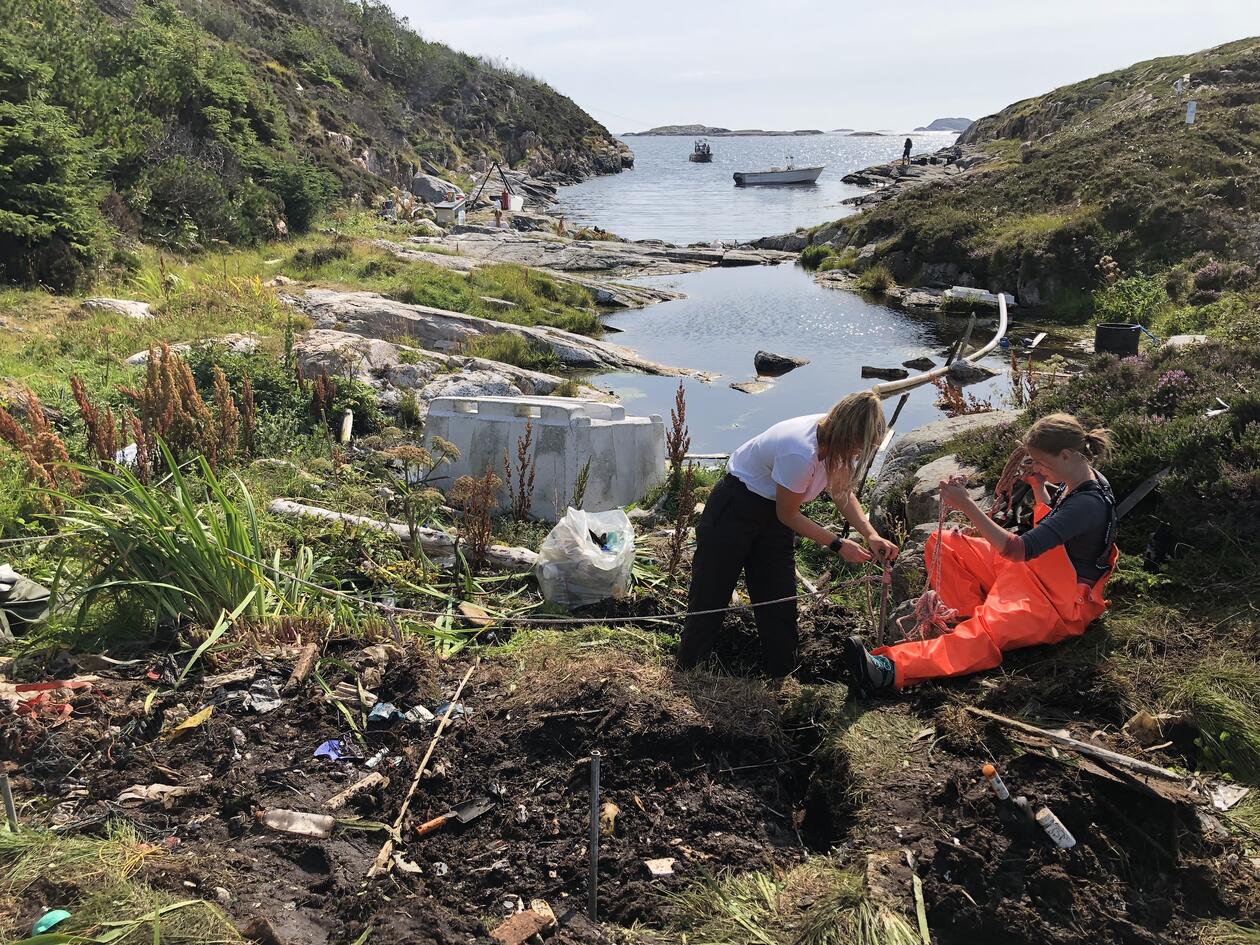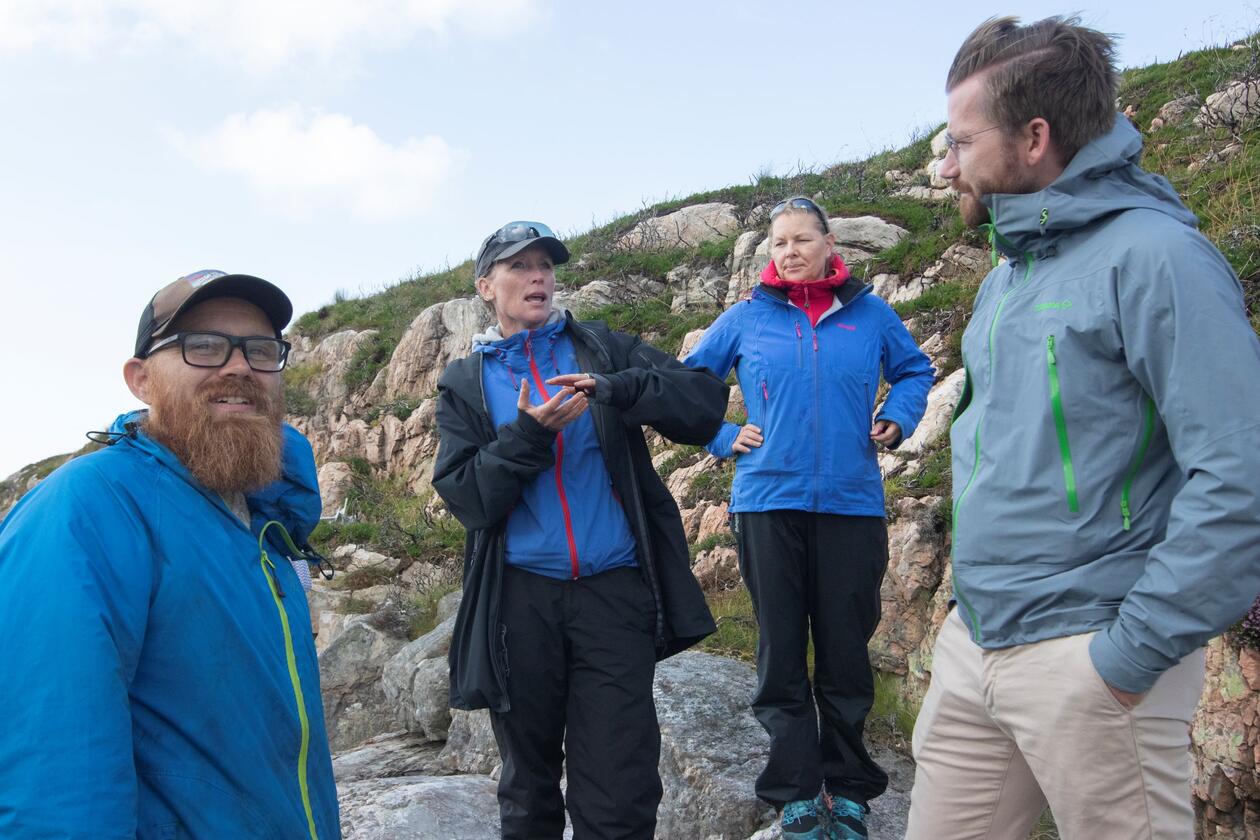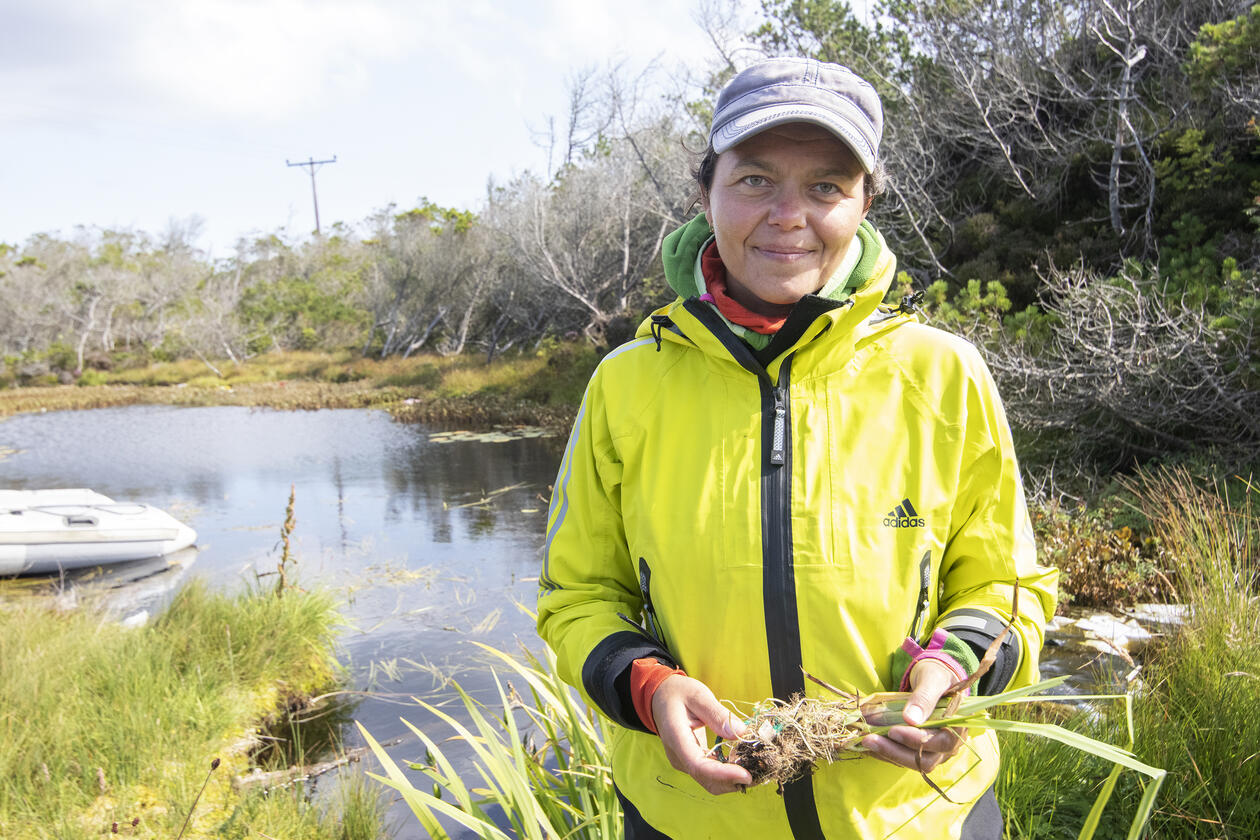Consequences of plastic pollution - and removal
In a new research project NORCE, The University of Bergen (UiB) and voluntary organizations are collaborating to find out how plastic pollution affects landscapes along the coast - and what happens when the plastic is removed.

Main content
The purpose of the NORCE-led project centered around the "plastic island" Lisle Lyngøyna outside of Bergen, is to investigate how plastic pollution affects the ecosystem. Furthermore, the researchers will study consequences of abrupt removal of the plastic.
Plastic changes the landscape
From August 9th to 13th, researchers, students and volunteers gathered on a fieldwork at Lisle Lyngøyna, which for decades has been a hotspot for huge amounts of plastic waste. Through the years plastic has changed the landscape and ecosystem, for example when soil builds up around plastic rubbish, or by plastic blocking the flow of water.
- But what happens if this plastic is removed? One suddenly changes an ecosystem that has built up over several decades, says Marte Haave who is a researcher at NORCE and Associate Professor at the Department of Chemistry, UiB.
Creating knowledge
- A main question is whether it is best for the ecosystem that you remove the plastic - or whether you should leave it and rather take care of the surrounding nature, Haave says.
To find the answer, the research group will, among other things, look at whether plastic pollution damages microorganisms, plant life, insects and animals - and whether the ecosystem is damaged when the plastic is abruptly removed again.
There are currently no guidelines for handling soil contaminated by plastic pollution. Among other things, the project will create knowledge that can contribute to creating such guidelines.
Plastic cleaning
The results will also be helpful in creating guidelines for how to clean up polluted beaches and bays in the best and most gentle way possible.
- It is good that people get involved in picking up plastic that lies on the surface, but what about plastic that has grown stuck in the ground, or is covered with soil? With this project, we will find answers to whether the plastic should be removed by force or with heavy machinery, or whether in these cases it is best to leave it, says Haave.
Microplastics and plants
Associate Professor Gidske Leknæs Andersen at the Department of Geography, UiB, is a participant in the project. She will investigate how the vegetation and selected plant species are affected by plastic pollution, both in the field and under controlled conditions.
She will also study the development after the soil have been cleared; to see if there are differences in growth and species composition between plants that grow in "clean" soil and in soil with a lot of microplastic.
- It is only recently that one has begun to look at the effects of microplastics in soil and on the surface, says Andersen.
- What could be the significance of this research?
- Lisle Lyngøyna is a unique “field laboratory” that connects the marine, aquatic and terrestrial environment. In the project we will study the entire ecosystem and the coastal landscape it is a part of. We will follow up the area over time and look closely at the consequences of plastic removal. In this way, we want to contribute to better management of our vulnerable coast and to the cleaning of natural environments that are polluted by plastic, says Andersen.



